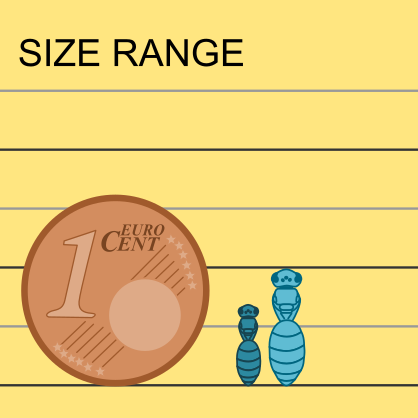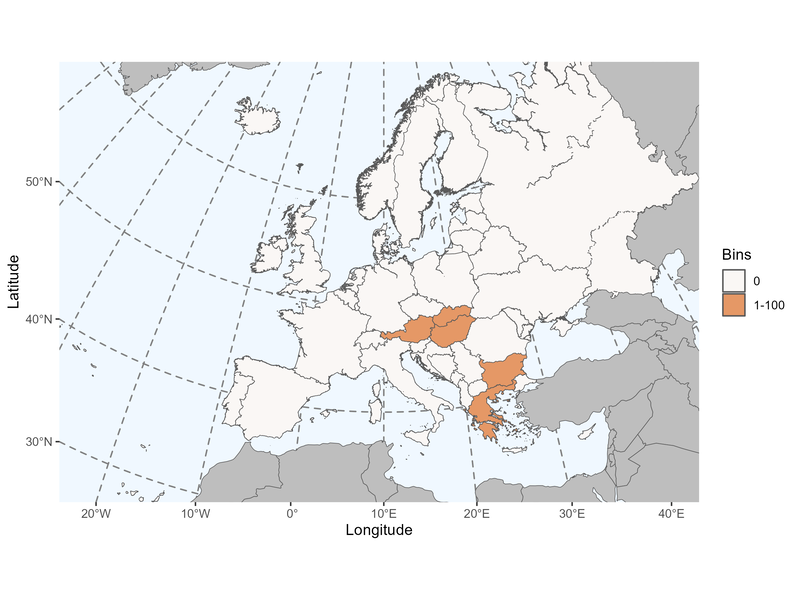Author: Mocsáry, 1894
|
Type species: Dioxys pannonica Mocsáry, 1877, monobasic
|
Clade: Anthophila
Family: Megachilidae SubF: Megachilinae Tribe: Dioxyini |
|
Distinctive traits
|
Pictures of distinctive traits.
(Sorry, there is no picture available at this time. If you have some and would like to become a contributor to IDmyBee, please contact us.) |
Morphologically close genera and how to distinguish them
Dioxys, Aglaoapis & Metadioxys species have no carina between the lateral teeth of the scutellum. The tip of the female abdomen is not needle-like.
Ensliniana species have a rounded scutellum.
Stelis species have the second recurrent vein reaching at or beyond (apically) to the second submarginal cell.
Coelioxys species have 2 tooth-like axillae and a rounded scutellum.
- Paradioxys - Dioxys, Aglaoapis & Metadioxys
Dioxys, Aglaoapis & Metadioxys species have no carina between the lateral teeth of the scutellum. The tip of the female abdomen is not needle-like.
- Paradioxys - Ensliniana
Ensliniana species have a rounded scutellum.
- Paradioxys - Stelis
Stelis species have the second recurrent vein reaching at or beyond (apically) to the second submarginal cell.
- Paradioxys - Coelioxys
Coelioxys species have 2 tooth-like axillae and a rounded scutellum.
General comments on Paradioxys species identification
Species can be distinguished based on lateral ornaments on metasomal tergites and mandible characters, easier to see when mandibles are open.
Species can be distinguished based on lateral ornaments on metasomal tergites and mandible characters, easier to see when mandibles are open.
Paradioxys species found in Europe (Ghisbain et al. 2023):
Paradioxys pannonicus (Mocsáry, 1877)
Paradioxys pannonicus (Mocsáry, 1877)
Page contributors:
You noticed a mistake? You have a suggestion to improve this page?
Don't keep it to yourself, please contact us and become a contributor to IDmyBee!
- Adrien Perrard (Dec. 2023)
- Adrien Perrard (Dec. 2019)
You noticed a mistake? You have a suggestion to improve this page?
Don't keep it to yourself, please contact us and become a contributor to IDmyBee!
References used to write this page:
- Ghisbain, G., Rosa, P., Bogusch, P., Flaminio, S., Le Divelec, R., Dorchin, A., Kasparek, M., Kuhlmann, M., Litman, J., Mignot, M., Müller, A., Praz, C., Radchenko, V.G., Rasmont, P., Risch, S., Roberts, S.P.M., Smit, J., Wood, T.J., Michez, D. & Reverte, S. (2023). The new annotated checklist of the wild bees of Europe (Hymenoptera: Anthophila). Zootaxa, 5327(1), 1-147.
- Michener, C.D. 2007. The Bees of the World, 2nd Edition. The John Hopkins University Press, Baltimore.
- Michez D., Rasmont P., Terzo, M., Vereecken, N. 2019. Abeilles d'Europes. Hymenoptères d'Europes, Volume 1. N.A.P. Editions.
- Nieto, A., Roberts, S. P., Kemp, J., Rasmont, P., Kuhlmann, M., García Criado, M., ... & Michez, D. 2014. European red list of bees. Luxembourg: Publication Office of the European Union, 98.
- Rasmont, P., Devalez, Jelle, Pauly, A., Michez, D. & Radchenko, V.G. 2017. Addition to the checklist of IUCN European wild bees (Hymenoptera: Apoidea). Annales de la Société entomologique de France 53: 17-32.



